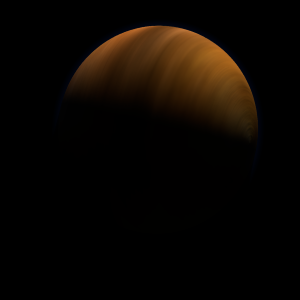|
|
Space Astro
|
Info for exoplanet "Kepebya"
| Scientific (actual) data |
|---|
| Name | WASP-150 b |
| Planet status | Confirmed |
| Planet mass | 8.46 |
| Radius | 1.07 |
| Orbital period | 5.64421 |
| Semi major axis | 0.0694 |
| Orbit eccentricity | 0.3775 |
| Inclination | 84.01 |
| Discovered | 2020 |
| Updated | 2020-04-18 |
| Tzero tr | 2457220 |
| Impact parameter | 0.758 |
| Temperature (kelvin) | 1460 |
| Publication | Published in a refereed paper |
| Detection type | Primary Transit |
| Mass measurement type | Radial Velocity |
| Radius measurement type | Primary Transit |
| Star name | WASP-150 |
| Right ascension | 264.26° |
| Declination | 53.02° |
| Mag v | 12 |
| Star distance | 536 |
| Star metallicity | 0.2 |
| Star mass | 1.346 |
| Star radius | 1.706 |
| Star temperature | 6093 |
| Wikipedia article | WASP-150 b |
Back
| |
| Fictional info (?) |
|---|
| Suggested name | Kepebya |
| Planet type | Huge hot gas giant |
| The volume of water ice in the south polar ice cap, if melted, would be sufficient to cover the entire planetary surface to a depth of 15 meters. |
| Atmosphere | Sulfur dioxide | 99% |
| Methane | 0.32% |
| Hydrogen peroxide | 0.18% |
| Hydrogen deuteride (HD) | 0.074% |
| Atmospheric pressure | 40 bar |
 |
| No known satellites |
| Google search for Kepebya |
|
Website by Joachim Michaelis
|
|
|
|